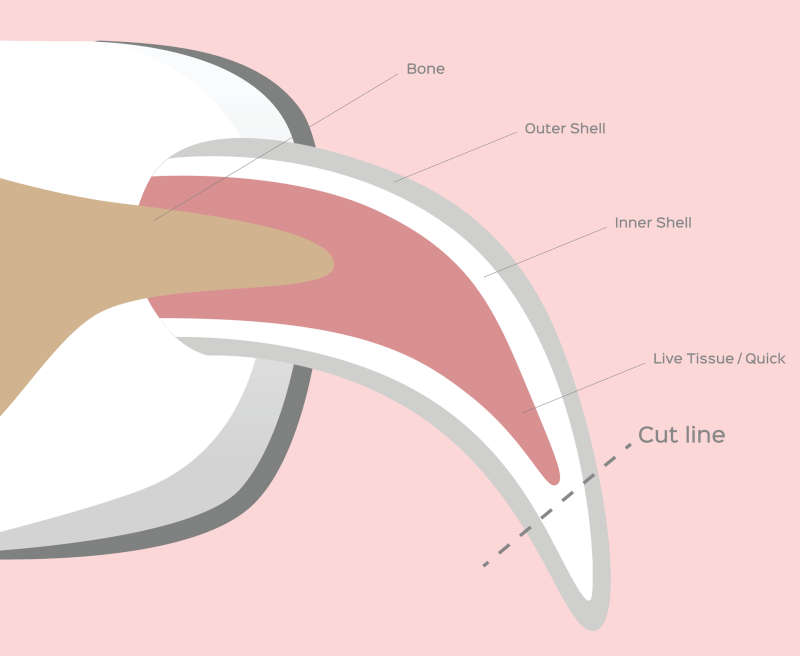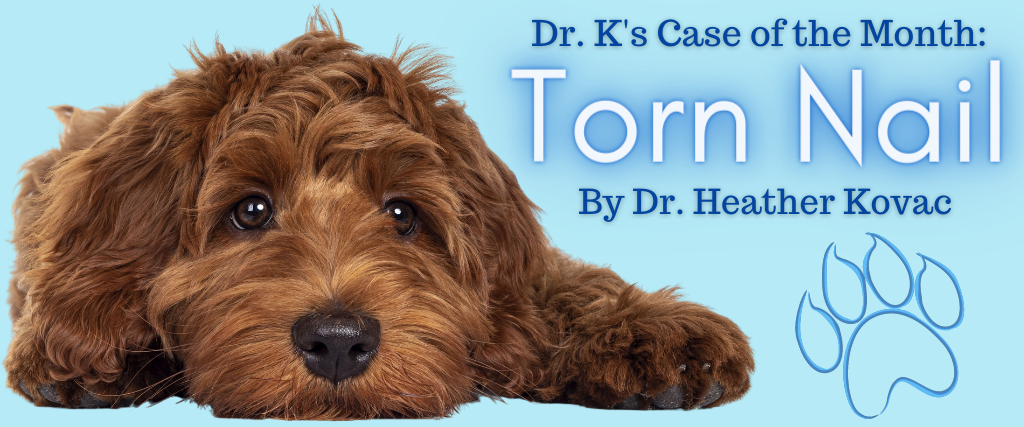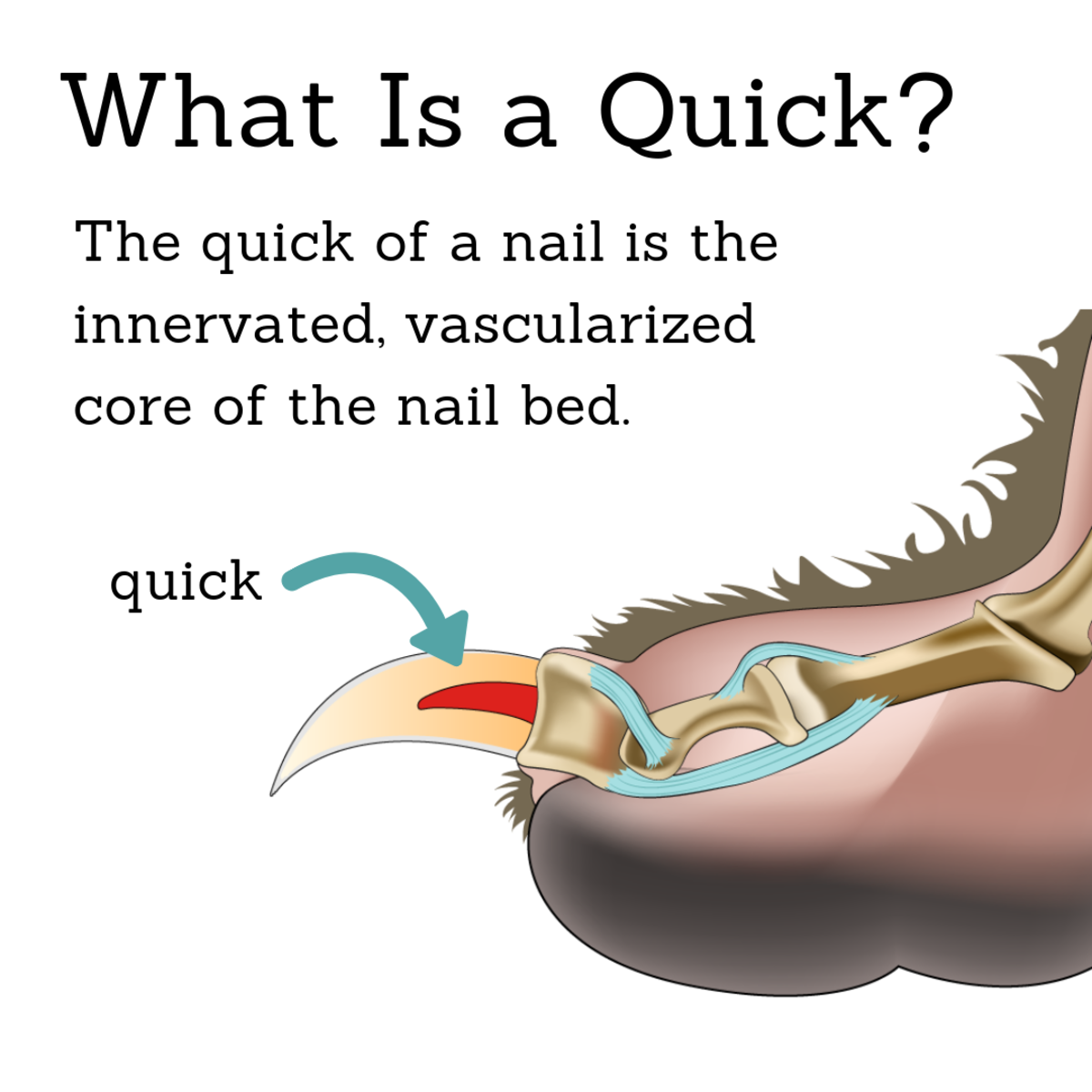The Patient
Charlie, a 2 year old male neutered Goldendoodle, came to see me for an injured nail. He had been playing in the yard and then came inside and was bleeding from one of his nails. He would not let the owner look at it too closely.

Source: Dreamstime
The Case
Upon examination, Charlie had a fresh fracture of the 2nd nail on the right front foot. There was an obvious crack in the nail and I could see blood coming from this location. He was very painful at the site and I needed to place a muzzle to properly examine the foot so he would not bite me. The fracture was up near the base of the nail near the nail bed. I recommended sedating Charlie so that I could trim the nail back past the point of the fracture so I could stop the bleeding and then allow the nail to grow out properly again. Sedation is often required for this procedure as nail injuries are quite painful and most dogs don't love their feet being touched. I administered a combination of an injectable sedative and pain medication to Charlie. After about 5 minutes, he was sedate enough to perform the procedure. First, I trimmed all the other nails routinely. Then, I cleaned the fractured nail with an antiseptic solution and trimmed some fur away from the area to make sure the area was easy to clean. I then used standard nail clippers to trim the fractured nail past the point of the break. The quick, or nerve and blood supply of the nail, was then exposed and bleeding moderately. I used sterile gauze and pressure to stop the majority of the bleeding. I then applied styptic powder to the quick to further cauterize the bleeding. Once I was confident the bleeding was controlled, I placed a soft padded bandage to protect the nail. The bandage was to stay in place for about 48 hours. I then reversed the sedation to allow Charlie to recover quickly.
The Treatment Plan
I prescribed an oral pain medication and instructed the owner on how to keep the bandage clean and dry and scheduled him to return in 2 days to have it removed. Thankfully, due to excellent blood supply to the feet, nail injuries typically heal quickly. An antibiotic is sometimes indicated if the nail appears infected prior to the treatment or if the foot is excessively dirty.
The Outcome
Charlie went on to heal normally. Dogs have 5 digits ("fingers") on each of the front limbs and typically 4 digits ("toes") on each of the rear limbs. The first digit is also called the "dewclaw" and is very short and does not touch the ground when a dog walks. This nail is more prone to damage as it can easily get snagged on something but also needs more regular attention to make sure it is kept short so this does not happen. Dogs have very similar anatomy to people as far as the names of the bones in the feet, although we do not use the term "hand" as in human anatomy. Also, most dogs are not born with a dewclaw on the rear foot but it can happen and in some breeds (Great Pyrenees), there are actually multiple dewclaws. Obviously, dogs also have foot pads on their feet which support the weight of the body and act as a cushion or natural shoe. Dogs often injure their foot pads and require treatment for lacerations, puncture wounds, and burns.
The Drake Center for Veterinary Care is an AAHA-accredited animal hospital located in Encinitas, CA. The Drake Center loves being a source of information for all pet owners across the country however if you have any questions regarding pet care and do not live in Encinitas, CA or surrounding cities, we encourage you to contact your local veterinarian.


